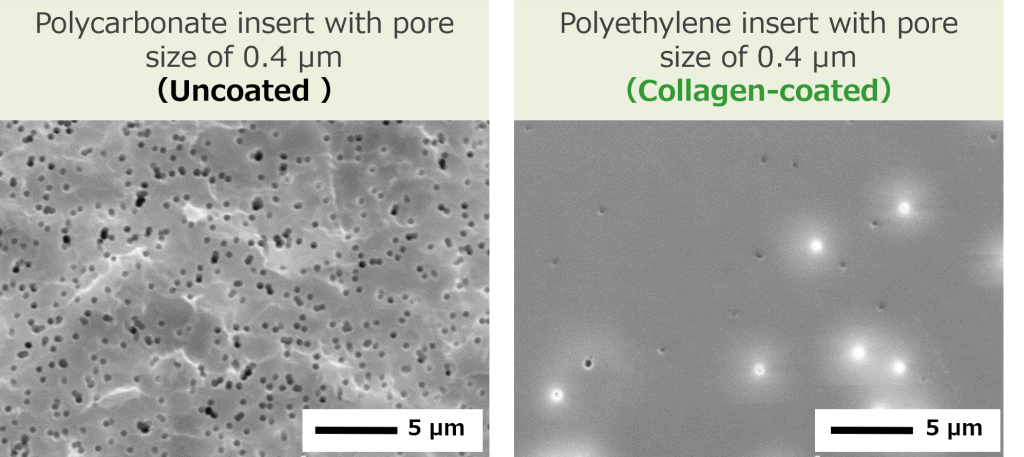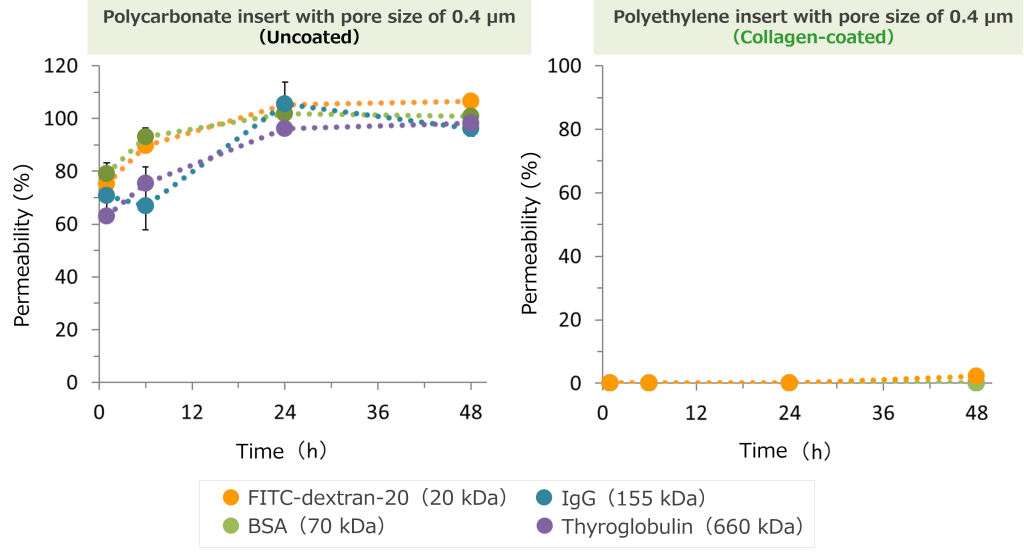Newsletters
Focus on permeability! How to choose a cell culture insert ー FibColl® with permeability and adhesive properties ー
14 February 2024
| |
|
|
|
|
|
Focus on permeability! How to choose a cell culture insert
-FibColl® with permeability and adhesive properties-
|
|
|
Cell culture inserts are widely used for coculture and air–liquid interface culture applications. Researchers routinely select inserts made from a suitable material with an appropriate pore size according to the purpose of their experiment. Incidentally, would you be surprised to know that there are various membrane pore structures, each of which differently affects material permeability?
Our test results suggested that collagen coating improves cell adhesion, particularly when using cell culture inserts with a small pore size, which may become blocked.
|
|
Comparison of pore structures and permeability with and without collagen coating
|
|
 |
|
Electron microscopy of the surface of each membrane revealed differences in the structure of cell culture inserts with the same pore size, although the original porosity varied due to the different membrane materials (based on in-house data for each product).
Therefore, we investigated the impact of these structural differences on material permeability. As shown in the graph below, the collagen-coated cell culture inserts were less permeable (based on in-house data from one of each product).
|
|
 |
|
|
Cell culture inserts offering both permeability and an adhesive property for cell attachment
|
|
FibColl® Atelocollagen Inserts 24 is a culture insert that uses a membrane made from atelocollagen. This allows the penetration of small molecules up to 600 kDa (based on in-house data).
|
|
|
|
|
|
|
|
|
|
Unlike other collagen-coated plastic membranes, FibColl® pores do not become clogged. Furthermore, the fiber structure of atelocollagen enables cell culture in an environment that mimics in vivo conditions.
|
|
|
|
|
|
| Observing cells is possible |
|
|
Although polycarbonate membranes uncoated with collagen have the advantage of high permeability, they do not enable cell observation using phase-contrast microscopy during culture. In contrast , FibColl® allows the observation of cells in culture, resolving the concern of being unable to see the state of the cells (based on in-house data).
|
|
|
|
|
|
|
|
|
|
|